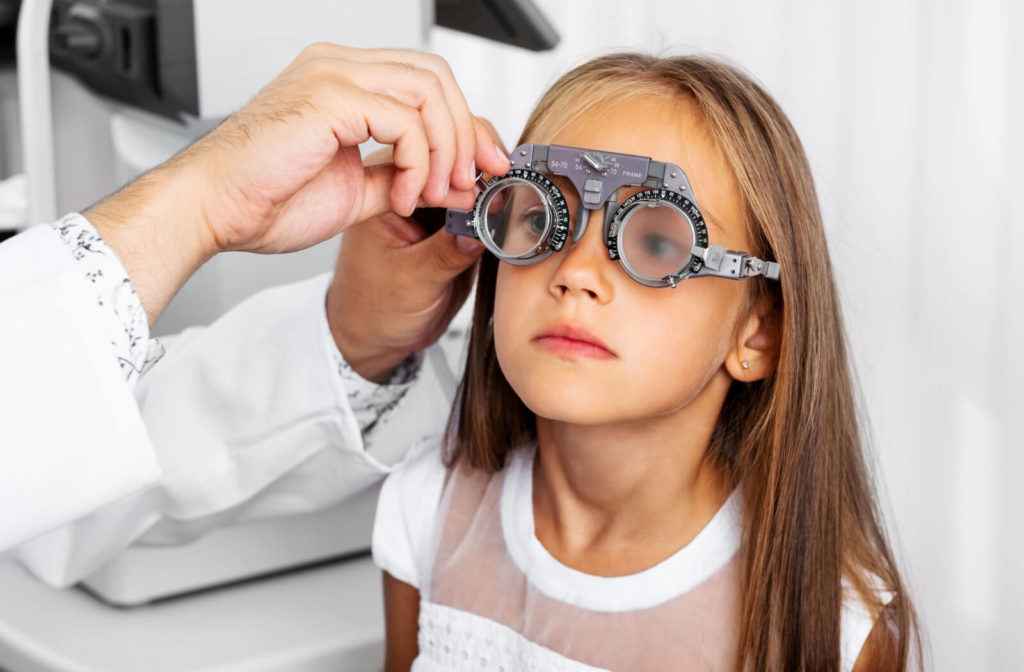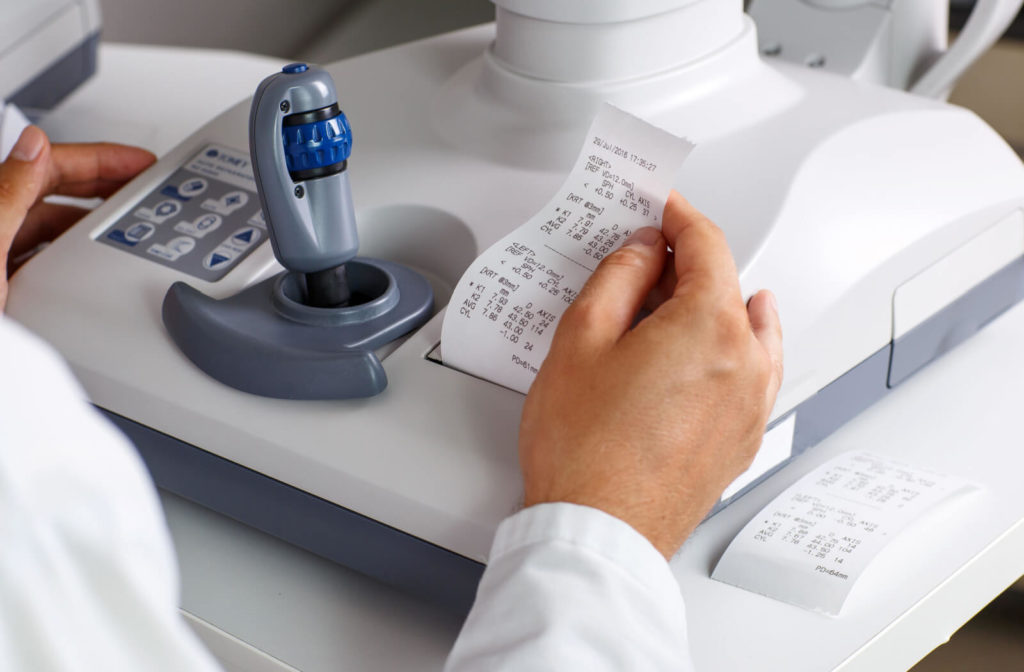A prescription change can result from age, vision problems, changing symptoms, or eye disease. Significant changes in eyeglass prescriptions can occur in adults and children.
A significant change in eyeglass prescription typically refers to a large enough difference that it affects your vision and how you see. It could mean an increase in the strength of your eyeglass prescription or a change in the type of lens you need.
Visiting your eye doctor for an adult or children’s eye exam can help determine the cause and address the issue.
How Do Eyeglass Prescriptions Work?
Eyeglass prescriptions consist of several numbers and abbreviations that describe the type and strength of lenses needed to correct your specific vision problem.
Here is a brief overview of eyeglass prescription indications:
- Sphere: Indicates the amount of lens power you need to correct nearsightedness (negative) or farsightedness (positive). The larger the number, the stronger the lens power. For example, a prescription of -2.50 indicates a stronger lens power than a prescription of -1.50.
- Cylinder: Refers to the amount of lens power you need to correct astigmatism. The cylinder power is a number preceded by a “C” or “CYL.”
- Axis: Expressed as a number from 0–180, it specifies the direction of the astigmatism correction in your eyeglass lens.
- Prism: This refers to a lens power used to correct problems with eye alignment, such as double vision.
- PD: Pupillary distance is the distance between the centers of your pupils and determines the correct positioning of your eyeglass lenses in relation to your pupils.

What Can Cause a Change in Eyeglass Prescription
Prescription changes in children occur because their eyes continue to grow until they are around 20 years old. However, our eyes continue to undergo age-related changes even as adults.
Some factors that can cause significant changes in eyeglass prescription include:
Aging
As you get older, your eyesight may naturally change due to age-related issues. After 40, your eyes can lose the ability to focus (presbyopia). After 60, it becomes more common to experience deteriorating eye health and vision issues, such as:
These changes may require wearing eyeglasses or contacts with a different prescription.
Eye Conditions
Myopia: Or nearsightedness, is a condition in which you can see objects up close clearly, but those in the distance appear blurry. Myopia, usually corrected with eyeglasses or contacts, is indicated by negative lens power.
Hyperopia: Or farsightedness, is a condition in which you can see objects in the distance clearly, but close-up ones appear blurry. Hyperopia, usually corrected with eyeglasses or contacts, is indicated by positive lens power.
Astigmatism: With astigmatism, the cornea (front surface of your eye) is shaped more like an oval than a sphere. Astigmatism, usually corrected with eyeglasses or contacts, requires cylindrical lens power.
Health Conditions
Certain health conditions, such as diabetes and high blood pressure, can affect your eyesight and may lead to a change in your eyeglass prescription. For example, in diabetes, as your blood sugar fluctuates, diabetes can change your eyeglass prescription.
Diabetes also increases your risk of developing glaucoma, cataracts, diabetic retinopathy, and diabetic macular edema. Having annual diabetic eye exams and controlling blood sugar can help prevent further complications.
High blood pressure can damage the blood vessels in the retina, the light-sensitive tissue at the back of the eye, where images focus and lead to vision changes.
Eye Injuries
An eye injury, such as a blow, cut, foreign material, or chemical splash, can cause changes to your eyes and vision. The injury can affect the shape of your eye or cause damage to the eye’s structures and this may lead to a change in prescription.
Pregnancy
Some women experience fluid retention during pregnancy that can change the thickness and shape of the cornea. It can lead to temporary vision changes in eyeglass prescription, which may resolve after pregnancy.
Medications
Some medications, such as corticosteroids, can affect your eyes and vision in various ways. It’s important to discuss any medications you are taking with your eye doctor, as they can advise you on any potential effects on your vision.
Proactive steps, such as regular eye exams and reaching out to your eye doctor as soon as you notice changes in your vision, can help protect your eyes and help prevent conditions from progressing.
Protect Your Vision with the Correct Prescription
Vision can fluctuate based on many things—don’t leave it up to age or guesswork. If you notice any changes in your vision, book an appointment with Rancho Santa Margarita Optometry.
We can help you determine the best action and treatment plan and recommend the correct eyeglasses prescription to meet your vision and ocular needs.


